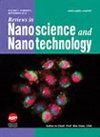基于d型光子晶体光纤的近红外折射率敏感传感器。
引用次数: 1
摘要
本文报道了一种在近红外区域具有高分辨率和高灵敏度的d形光子晶体光纤等离子体折射率传感器的数值研究。d型光子晶体光纤是通过对光子晶体光纤的一部分进行侧面抛光而形成的。它具有抛光表面,在抛光表面涂覆等离子体金层以调制谐振波长并提高折射率灵敏度。设计了几种从光子晶体光纤芯到抛光表面的距离和金层厚度不同的d型光子晶体光纤等离子体传感器,并用有限元法分析了它们的特性。仿真结果表明,d型光子晶体光纤等离子体传感器的损耗强度、谐振波长和折射率灵敏度随光纤芯距抛光表面的距离而变化。采用一种简单的制造工艺实现了折射率传感器的量产,即在d形光子晶体光纤的核心到抛光表面的距离小于一层厚度的地方进行研磨,然后在表面涂上金层。对于折射率传感应用,d型光子晶体光纤等离子体传感器的最大理论分辨率和灵敏度在1.30 ~ 1.37范围内分别达到2.98 × 10 × 6折射率单位和6140 nm/折射率单位。我们也报导了d形光子晶体光纤的初步制作,并采用标准的堆叠和绘制方法,以证明所提出的器件在我们内部设备上的可行性。本文所提出的d型光子晶体光纤等离子体传感器设计,将为研制低成本、高灵敏度、高分辨率的折射率传感器提供参考。本文章由计算机程序翻译,如有差异,请以英文原文为准。
Sensitive Near-Infrared Refractive Index Sensors Based on D-Shaped Photonic Crystal Fibers.
We report a numerical study of D-shaped photonic crystal fiber based plasmonic refractive index sensor with high resolution and sensitivity in the near-infrared region. D-shaped photonic crystal fiber is formed by side polishing one part of photonic crystal fiber. It has a polishing surface where plasmonic gold layer is coated to modulate the resonant wavelength and enhance the refractive index sensitivity. Several D-shaped photonic crystal fiber plasmonic sensors with various distances from the photonic crystal fiber's core to the polishing surface and gold thicknesses are designed and their characteristics are analyzed by the finite element method. The simulation results indicate that distance from the photonic crystal fiber's core to the polishing surface causes modifications in the loss intensity, the resonant wavelength, and the refractive index sensitivity of D-shaped photonic crystal fiber plasmonic sensor. Mass production of refractive index sensors were achieved using a simple fabrication process, whereby the D-shaped photonic crystal fiber is grinded where distance from the photonic crystal fiber's core to the polishing surface is less than one layer thickness and then coated with the gold layer. For the refractive index sensing applications, the maxima theoretical resolution and sensitivity of D-shaped photonic crystal fiber plasmonic sensor reach 2.98 × 10 6refractive index unit and 6,140 nm/refractive index unit in range of 1.30-1.37, respectively. We also report an initial fabrication of the D-shaped photonic crystal fiber following the standard stack-and- draw method to demonstrate the feasibility of the proposed device by using our in-house equipments. The proposed D-shaped photonic crystal fiber plasmonic sensor design in this work would be useful for the development of cheap refractive index sensors with high sensitivity and resolution.
求助全文
通过发布文献求助,成功后即可免费获取论文全文。
去求助
来源期刊

Journal of nanoscience and nanotechnology
工程技术-材料科学:综合
自引率
0.00%
发文量
0
审稿时长
3.6 months
期刊介绍:
JNN is a multidisciplinary peer-reviewed journal covering fundamental and applied research in all disciplines of science, engineering and medicine. JNN publishes all aspects of nanoscale science and technology dealing with materials synthesis, processing, nanofabrication, nanoprobes, spectroscopy, properties, biological systems, nanostructures, theory and computation, nanoelectronics, nano-optics, nano-mechanics, nanodevices, nanobiotechnology, nanomedicine, nanotoxicology.
 求助内容:
求助内容: 应助结果提醒方式:
应助结果提醒方式:


